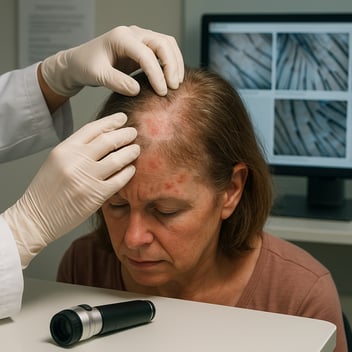The group of hair loss conditions known as the “scarring alopecias” are less common overall than the non-scarring alopecias. Scarring alopecias include conditions such as lichen planopilaris (LPP), discoid lupus (DLE), frontal fibrosing alopecia (FFA), folliculitis decalvans (FD), central centrifugal cicatricial alopecia (CCCA) and dissecting cellulitis (DSC). This diagram shows the typical age ranges that patients generally first develop these conditions. Dissecting cellulitis and discoid lupus for example for commonly start to affect individuals in their 20s and 30s. In contrast, frontal fibrosing alopecia generally starts affecting individuals in their mid 40s, 50s and 60s. These are “averages” and of course exceptions exist in every aspect of the field of hair loss.

Why does age matter?
The implications of this diagram are profound. A 21 year old female who is worried about having FFA probably does not have FFA. Of course she might (as exceptions do exist) but I’d estimate that 2 out of every 1 million women develop FFA at age 21. A 19 year old woman of Afro-Caribbean descent who presents with hair loss is far more likely to have traction alopecia and even scarring forms of traction alopecia than CCCA. Can she have CCCA? Sure. But unlikely. A 90 year old woman developing folliculitis decalvans is unusual. She more likely has infectious causes or causes related to general immune suppression, pustular medication reactions, or erosive pustular dermatosis of the scalp (EPDS)
Article orginally posted at donovanmedical.com
For more information about cicatricial alopecia, visit carfintl.org



